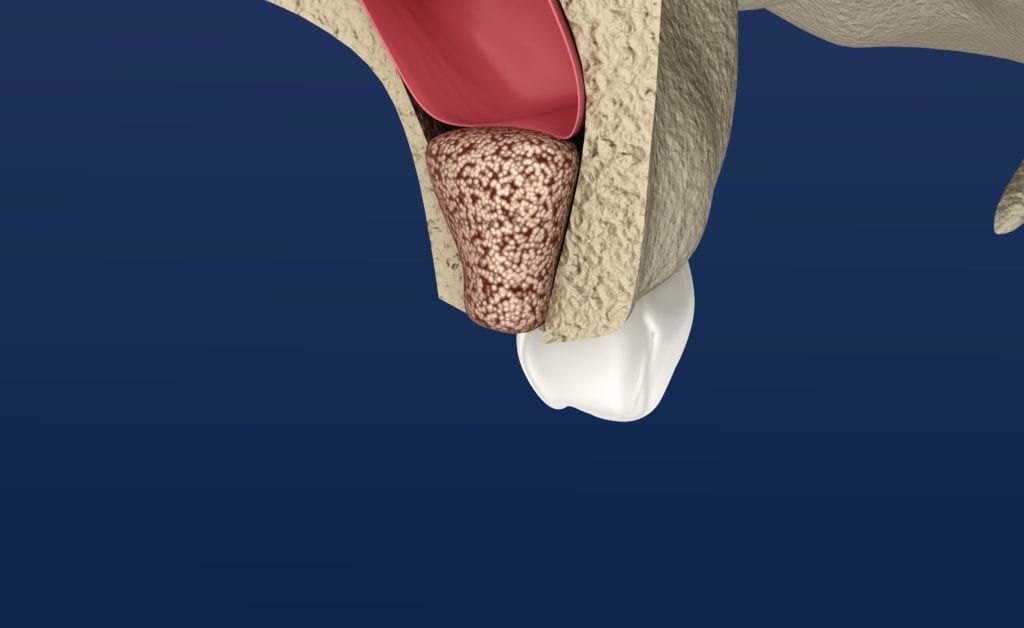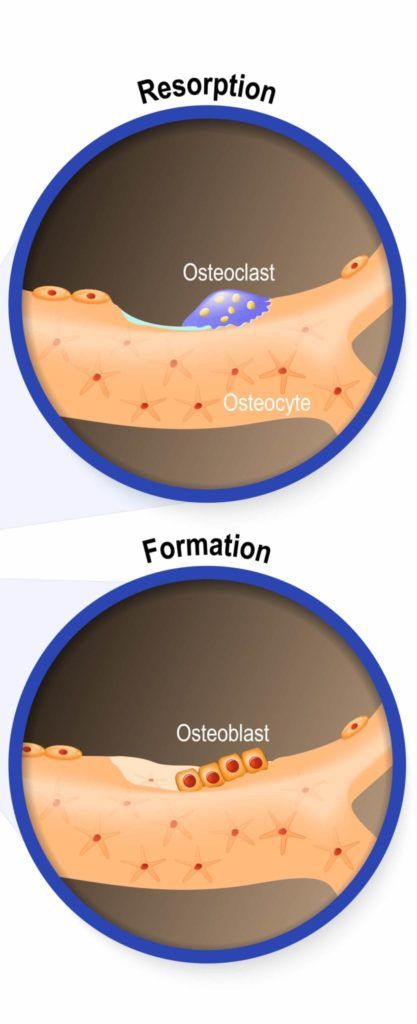What is Bone Grafting?
Bone grafting is a procedure used to replace bone and promote new bone growth. Bone grafts are often performed in coordination with the placement of dental implants. During a bone graft, bone material is placed in an area of low bone mass. In most cases, this bone material is a powder, granule, putty, or gel that has been manufactured in a lab. In some cases, the bone material may also be harvested from another location on your body. Once the bone material has been placed, it will initiate a process to produce new bone in that area.
There are different types of bone grafts, including:
Minor Bone Graft
Minor bone grafts are performed after a tooth extraction and simply place bone material in the empty tooth socket to encourage bone growth in the socket as the extraction site heals.
Medium Bone Graft
Medium bone grafts are performed when bone loss has affected the height and width of the jawbone. In this case, bone material is used to build up the height and width of the jawbone. This is one of the more common types of bone grafts.
Major Bone Graft
Major bone grafts are performed in cases of severe bone loss. A major bone graft uses a piece of bone from elsewhere in the body attached with plates and screws. Bone material is then placed around the junctions between the jawbone and donor bone to promote an even junction while healing.
Sinus Lift

A sinus lift is a special type of bone graft that is performed on the upper jaw. With a sinus lift, bone material is added to the upper jaw in order to thicken the bone between the mouth and sinus cavity. During a sinus lift, your oral surgeon will make an incision in the gums to access the sinus cavity. Then, they will lift the sinus membrane and place bone material between the membrane and sinus floor to thicken the bone.
Why do I need a bone graft?
When one or more teeth are missing, the jawbone no longer receives stimulation from chewing. Without proper stimulation, the bone mass in that area atrophies and is reabsorbed by the body in a process known as bone resorption. Bone resorption is an irreversible process that will eventually result in structural changes to the surrounding bone structure. This also causes the quality and quantity of the remaining bone to be poor and not suitable for the placement of dental implants. In these situations, a bone graft is necessary to build up the bone structure so that dental implants can be placed.
Bone grafts are also sometimes performed to save teeth that have become loose from severe periodontitis. Unfortunately, advanced gum disease can cause the same type of bone loss associated with missing teeth. This causes the existing teeth to become loose and eventually fall out. In these cases, bone grafts can be used to regenerate the bone and secure the teeth.
In cases where teeth need to be extracted due to damage, decay, or gum disease, bone grafting material may be placed at the extraction site. This is a proactive measure that prevents bone loss and allows the patient to replace their missing tooth with a dental implant at some point in the future.

In the resorption image, you can see the presence of osteoclasts, whose main function is to help the body absorb bone material. Notice the indentation on the bone surface from a loss of bone mass. Conversely, the formation picture shows the presence of osteoblasts, whose main function is to help the body grow new bone cells. Missing teeth cause your jaw to look like the first picture, while a bone graft reverses this process and promotes new bone formation.
How is a bone graft performed?
A bone graft is a minor oral surgery that is performed with the use of dental anesthetics and sedation. In most cases, only local anesthesia is required, however deeper sedation can be used if necessary. Your oral surgeon will make a tiny incision in the gums to access the underlying bone. Then, the bone graft material will be placed in the affected area.
How long does a bone graft take to heal?
After your bone graft, the initial recovery period is about two weeks. During this period, your Modesto oral surgeon will provide you with post-operative guidelines to follow. However, bone grafts take about 3-6 months to completely heal to the point where a dental implant can be placed.
